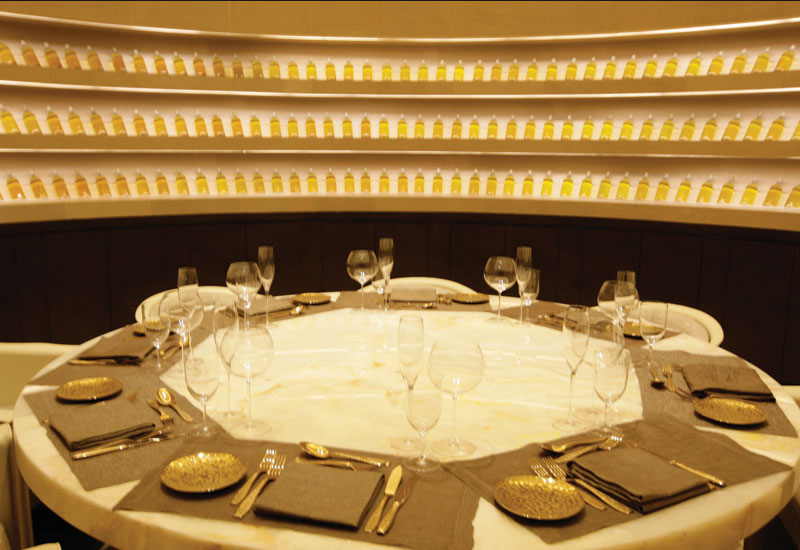 Guy Wilkinson and Gerhard Hardick identified Makkah Clock Royal Tower ? A Fairmont Hotel, as one of the most important openings of 2010. Wilkinson us
Guy Wilkinson and Gerhard Hardick identified Makkah Clock Royal Tower ? A Fairmont Hotel, as one of the most important openings of 2010. Wilkinson us
Industry experts look back on the highs and lows of the Middle East hotel sector in 2010 and comment on the trends expected to continue to impact development and operations in 2011
There are two words that crop up repeatedly when looking back on the performance of the Middle East hotel industry in 2010. These are supply and demand. Generally speaking, it is largely this relationship between the number of hotel rooms available and the number of people that want to stay in them that has dominated the hotel landscape over the past year. For more developed markets, such as Dubai and Doha, it posed real challenges when it came to increasing occupancy and RevPAR, but for other upcoming or evolving destinations, namely Beirut and Cairo, the hotel industry has flourished.
According to MKG Hospitality director of development Vanguelis Panayotis, the impact of the economic downturn was intensified in the region because it coincided with “the middle of a supply boom” and affected major feeder markets.
“The region also heavily relies on international tourism, and in most cases, upscale (i.e. up market leisure and corporate). These were the two worse affected areas by the global crisis,” said Panayotis.
As a result, the main challenge faced by hotels in 2010 was to build average daily rates up again and control operating costs in the meanwhile, according to Viability director Guy Wilkinson.
“This problem was exacerbated for hotels in weak or oversupplied markets, and especially those in secondary locations, which also had to fight for occupancy,” he said.
Destinations with a strong domestic market were a lot more resilient, added Panayotis.
“Countries outside the GCC have performed best thus far this year (year-to-date September 2010), such as those in the Levant, North Africa and Turkey,” continued Panayotis. “These destinations are a lot more focused on mass tourism, able to offer very attractive and usually all inclusive packaged deals — a decisive factor for foreign travellers during the economic hardship, who also opted to stay closer to home. These destinations are also quite successful with intra-regional travel, for similar reasons and due to their cultural similarities. Furthermore, they tend to be much larger markets, therefore have greater domestic input, particularly relevant for business related segments.

Advertisement
“Overall in the MENA region, greatest RevPAR growth was recorded in Tunisia at over 20%, followed by Turkey at 18%, Egypt 15% and Morocco 8.5%,” revealed Panayotis, referring to MKG’s market observatory HotelCompSet.
“In the Middle East, only three countries record growth. Jordan proved to be the star performer, with RevPAR increasing by almost 11%, followed by Saudi Arabia at 9%, boosted recently by a major increase in prices during Ramadan, and then Bahrain with 5% RevPAR growth. Meanwhile, the UAE has recovered much ground from its sluggish performance, with demand growing and the drop in average prices slowing down.
“Overall, occupancy rate (demand) is generally stabilising in the region, and the decline in average daily rate slowing down. RevPAR growth should continue to improve for the rest of the year and pick up pace in 2011 and beyond,” Panayotis observed.
Sector leaders
An increase in budget offerings in many Middle Eastern countries has made a major impact in 2010, our experts noted.
Both Roya International chief operating officer Gerhard Hardick and HVS Global Hospitality Services Dubai managing director Hala Matar Choufany identified budget and four-star hotels as the best performing sector in 2010.
Panayotis added: “Economy and midscale hotels seemed to have produced more promising results, as they were in the best position to receive the spill over demand from higher categories when the corporate sector and leisure travellers cut back on expenses. Hotels that focus more on business segments certainly suffered more, whilst those that were offering affordable all inclusive packages were able to maintain more respectable demand levels”.
Interestingly though, TRI managing director Peter Goddard said that “four star hotels oriented towards business travellers” performed best in 2010.
Charles Bott, executive director, hospitality at British Arabian Chartered Surveyors, noted achievements in a range of sectors, including: “budget hotels, because these hotels reached their stabilised trading occupancy and rate during 2010; resort hotels, because the hotels on Jumeirah beach achieving 90%+ occupancy speaks for itself, but they had to drop their rates by up to 20% to do this; and serviced apartments, which had a successful year because international travellers saw them as an alternative means of accommodation with greater flexibility and superior value for money”.









 Search our database of more than 2,700 industry companies
Search our database of more than 2,700 industry companies









